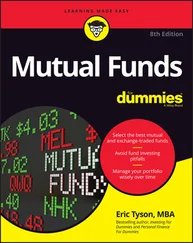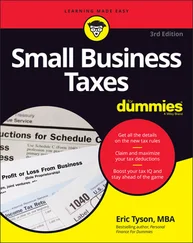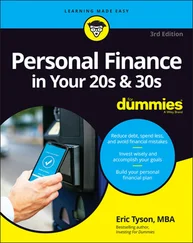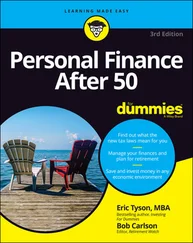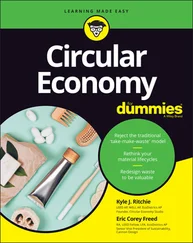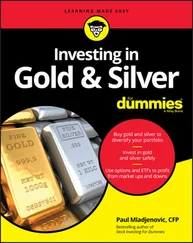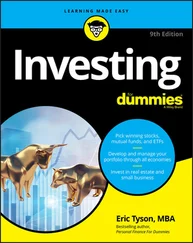1 ...6 7 8 10 11 12 ...17
Saving for kids’ higher educational costs
Do you have little ones or plan to have them in your future? You probably know that rearing a child (or two or more) costs really big bucks. But the biggest potential expense awaits when they reach young adulthood and consider heading off to college, so your instincts may be to try to save money to accomplish and afford that goal.
 The college financial-aid system effectively penalizes you for saving money outside tax-sheltered retirement accounts and penalizes you even more if the money is invested in the child’s name. Wanting to provide for your children’s future is perfectly natural, but doing so before you’ve saved adequately toward your own goals can be a major financial mistake.
The college financial-aid system effectively penalizes you for saving money outside tax-sheltered retirement accounts and penalizes you even more if the money is invested in the child’s name. Wanting to provide for your children’s future is perfectly natural, but doing so before you’ve saved adequately toward your own goals can be a major financial mistake.
This concept may sound selfish, but the reality is that you need to take care of your future first. Take advantage of saving through your tax-sheltered retirement accounts before you set aside money in custodial savings accounts for your kids.
 There are numerous higher education options besides costly four-year colleges and universities. I’m a big fan of alternatives to the traditional college path, which isn’t right for everyone. Consider alternatives to traditional college (and whether they are right for your child). While college is a traditional path that many high school seniors follow, there are increasing numbers of attractive, low-cost, and faster alternatives to consider. For example:
There are numerous higher education options besides costly four-year colleges and universities. I’m a big fan of alternatives to the traditional college path, which isn’t right for everyone. Consider alternatives to traditional college (and whether they are right for your child). While college is a traditional path that many high school seniors follow, there are increasing numbers of attractive, low-cost, and faster alternatives to consider. For example:
Last-mile boot camps: Last-mile programs teach students technical skills and clear the pathways to jobs in growing industries like technology, biotech, fintech, and healthcare.
College minimum viable products (MVPs): These programs combine the technical skill training and placement of traditional last-mile programs with significant cognitive and noncognitive skill development that students get from a good college.
Apprenticeships: Emerging apprenticeships provide pathways for jobs in the manufacturing, healthcare, pharmacy, IT, insurance, financial services, and software development industries.
Staffing firms: These companies hire workers and staff them out to clients. For example, Revature, an IT staffing company, hires experienced software developers. Also, Avenica places students from many colleges and offers last-mile training across many industries.
Vocational and trade schools: Also known as career and technical education (CTE), these schools provide gateways to a wide range of jobs in the automotive industry, culinary arts, emergency services, healthcare, and more.
Investing short-term money
So where should you invest money earmarked for a shorter-term goal? A money market account or short-term bond fund is a good place to store your short-term savings. See Chapters 7and 9for more information on these options. The best bank or credit union accounts (covered in Chapter 6) may be worth considering as well.
Investing in Retirement Accounts
During your younger adult years, you may not be thinking much about retirement because it seems to be well off in the distance. But if you’d like to scale back on your work schedule someday, partly or completely, you’re best off saving toward that goal as soon as you start drawing a regular paycheck.
 Maybe the problem with thinking about this goal stems in part with the term retirement. Perhaps thinking about it in terms of saving and investing to achieve financial independence is better.
Maybe the problem with thinking about this goal stems in part with the term retirement. Perhaps thinking about it in terms of saving and investing to achieve financial independence is better.
In this section, I explain the benefits and possible concerns of investing through so-called retirement accounts. I also lay out the retirement account options you may access.
Understanding retirement account perks
Where possible, try to save and invest in accounts that offer you a tax advantage, which is precisely what retirement accounts offer you. These accounts — known by such enlightening acronyms and names as 401(k), 403(b), SEP-IRA, and so on — offer tax breaks to people of all economic means. Consider the following advantages to investing in retirement accounts:
Contributions often provide upfront tax breaks. By investing through a retirement account, you not only plan wisely for your future but also get an immediate financial reward: lower taxes, which mean more money available for saving and investing. Retirement account contributions generally aren’t taxed at either the federal or state income tax level until withdrawal (but they’re still subject to Social Security and Medicare taxes when earned). If you’re paying, say, 30 percent between federal and state taxes (see Chapter 4to determine your tax bracket), a $4,000 contribution to a retirement account lowers your income taxes by $1,200.Modest income earners also may get an additional government tax credit known as the Retirement Savings Contributions Credit. A maximum credit of 50 percent applies to the first $2,000 contributed for single taxpayers with an adjusted gross income (AGI) of no more than $19,750 and married couples filing jointly with an AGI of $39,500 or less. Singles with an AGI of between $19,750 and $21,500 and married couples with an AGI between $39,500 and $43,000 are eligible for a 20 percent tax credit. Single taxpayers with an AGI of more than $21,500 but no more than $33,000, as well as married couples with an AGI between $43,000 and $66,000, can get a 10 percent tax credit.
Your employer may match some of your contributions. This cash is free money from your employer, and it’s use it or lose it, so don’t miss out!
Investment returns compound tax-free. After you put money into a retirement account, you get to defer taxes on all the accumulating gains and profits (including interest and dividends) until you withdraw the money down the road. Thus, more money is working for you over a longer period of time. (One exception: Roth IRAs offer no upfront tax breaks but permit tax-free withdrawal of investment earnings in retirement.)
Grappling with retirement account concerns
There are legitimate concerns about putting money into a retirement account. First and foremost is the fact that once you place such money inside a retirement account, you can’t generally access it before age 59½ without paying current income taxes and a penalty — 10 percent of the withdrawn amount in federal tax, plus whatever your state charges.
This poses some potential problems. First, money placed inside retirement accounts is typically not available for other uses, such as buying a car or starting a small business. Second, if an emergency arises and you need to tap the money, you’ll get hit with paying current income taxes and penalties on amounts withdrawn.
 You can use the following ways to avoid the early-withdrawal penalties that the tax authorities normally apply:
You can use the following ways to avoid the early-withdrawal penalties that the tax authorities normally apply:
You can make penalty-free withdrawals of up to $10,000 from IRAs for a first-time home purchase or higher educational expenses for you, your spouse, or your children (and even grandchildren).
Some company retirement plans allow you to borrow against your balance. You’re essentially loaning money to yourself, with the interest payments going back into your account.
Читать дальше
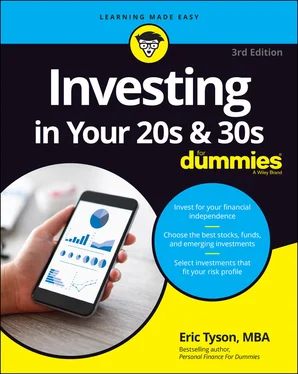
 The college financial-aid system effectively penalizes you for saving money outside tax-sheltered retirement accounts and penalizes you even more if the money is invested in the child’s name. Wanting to provide for your children’s future is perfectly natural, but doing so before you’ve saved adequately toward your own goals can be a major financial mistake.
The college financial-aid system effectively penalizes you for saving money outside tax-sheltered retirement accounts and penalizes you even more if the money is invested in the child’s name. Wanting to provide for your children’s future is perfectly natural, but doing so before you’ve saved adequately toward your own goals can be a major financial mistake. There are numerous higher education options besides costly four-year colleges and universities. I’m a big fan of alternatives to the traditional college path, which isn’t right for everyone. Consider alternatives to traditional college (and whether they are right for your child). While college is a traditional path that many high school seniors follow, there are increasing numbers of attractive, low-cost, and faster alternatives to consider. For example:
There are numerous higher education options besides costly four-year colleges and universities. I’m a big fan of alternatives to the traditional college path, which isn’t right for everyone. Consider alternatives to traditional college (and whether they are right for your child). While college is a traditional path that many high school seniors follow, there are increasing numbers of attractive, low-cost, and faster alternatives to consider. For example: